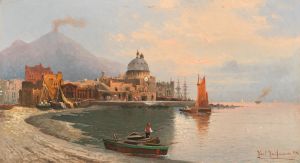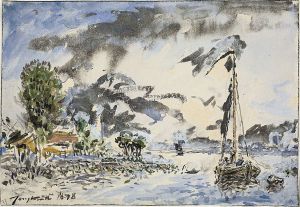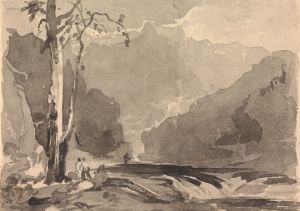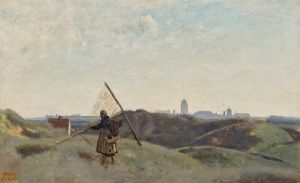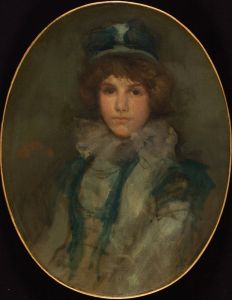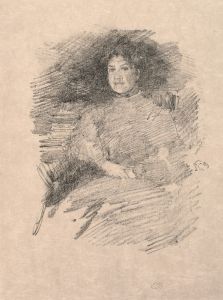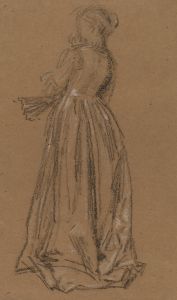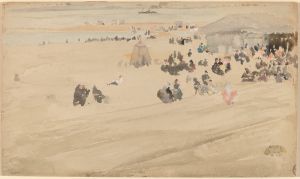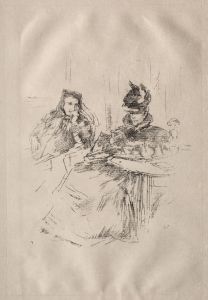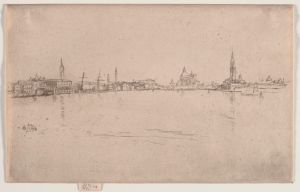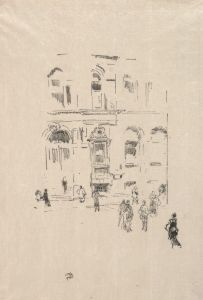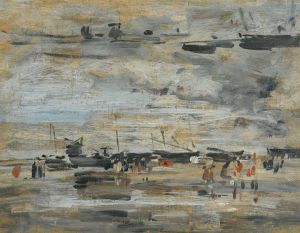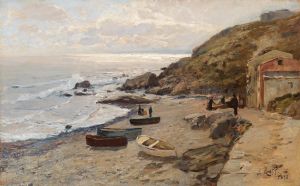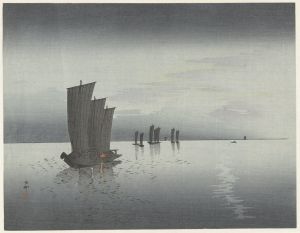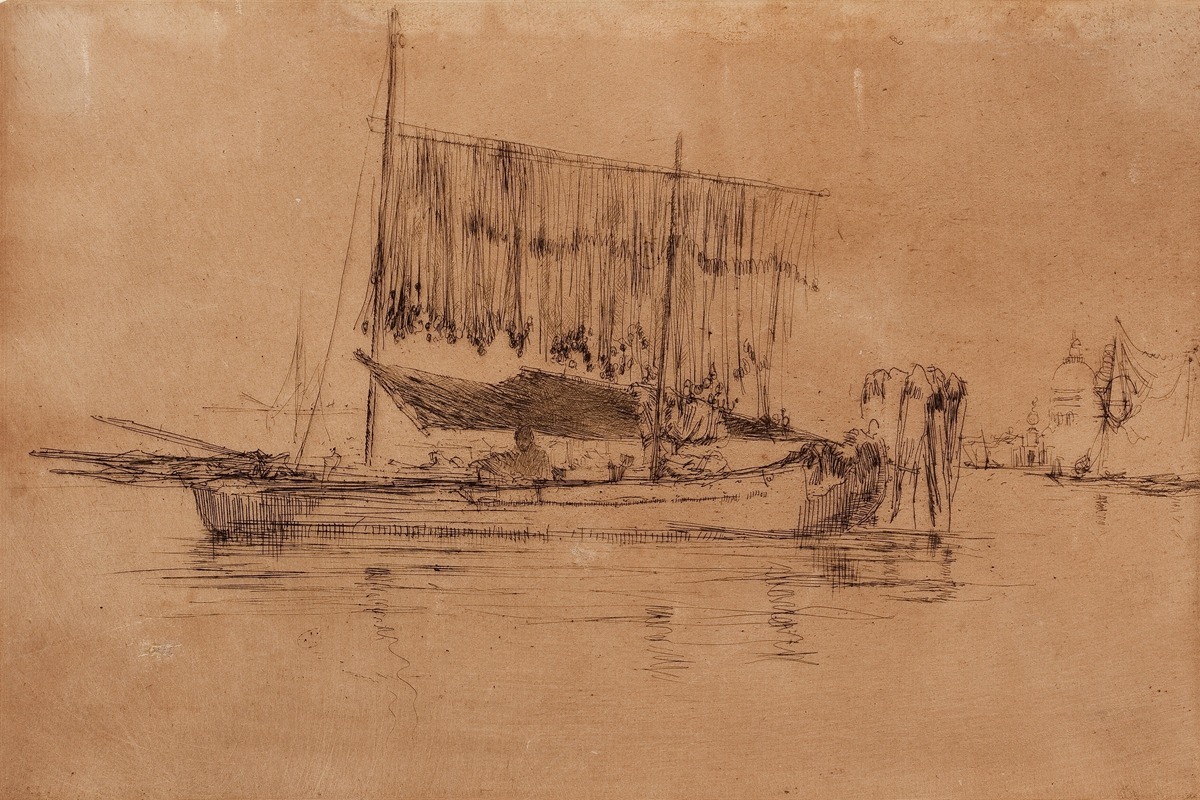
Fishing Boat
A hand-painted replica of James Abbott McNeill Whistler’s masterpiece Fishing Boat, meticulously crafted by professional artists to capture the true essence of the original. Each piece is created with museum-quality canvas and rare mineral pigments, carefully painted by experienced artists with delicate brushstrokes and rich, layered colors to perfectly recreate the texture of the original artwork. Unlike machine-printed reproductions, this hand-painted version brings the painting to life, infused with the artist’s emotions and skill in every stroke. Whether for personal collection or home decoration, it instantly elevates the artistic atmosphere of any space.
James Abbott McNeill Whistler was an American artist known for his significant contributions to the art world during the late 19th century. He is best remembered for his paintings, etchings, and lithographs, which often exhibit a unique blend of realism and impressionism. One of his works, "Fishing Boat," reflects his interest in maritime subjects, although specific details about this particular painting are limited.
Whistler was born in Lowell, Massachusetts, in 1834 and spent much of his early life in Europe. He was heavily influenced by the artistic movements of his time, particularly the Aesthetic Movement, which emphasized the importance of beauty and art for art's sake. His style was also shaped by his exposure to Japanese art, which was gaining popularity in Europe during his lifetime.
Throughout his career, Whistler was known for his innovative approach to composition and his use of color. He often employed a limited palette, focusing on subtle tonal variations to create mood and atmosphere. This technique is evident in many of his works, including those depicting maritime themes.
"Fishing Boat" likely belongs to a series of works where Whistler explored the interplay of light and water, capturing the serene and sometimes melancholic essence of the sea. His maritime paintings often feature boats, harbors, and coastal scenes, rendered with a delicate touch and an eye for detail. Whistler's ability to convey the reflective qualities of water and the nuances of the sky is a testament to his skill as a painter.
Whistler's maritime works are part of his broader oeuvre, which includes famous pieces such as "Arrangement in Grey and Black No. 1" (commonly known as "Whistler's Mother") and "Nocturne in Black and Gold: The Falling Rocket." These paintings exemplify his mastery of composition and his ability to evoke emotion through subtle visual cues.
In addition to his paintings, Whistler was an accomplished printmaker. His etchings and lithographs often featured similar themes to his paintings, including urban and maritime scenes. His printmaking work contributed to the revival of etching as a significant art form in the late 19th century.
Whistler's influence extended beyond his own work. He was a central figure in the art world of his time, known for his sharp wit and sometimes controversial opinions. His famous legal battle with art critic John Ruskin, who criticized Whistler's work, highlighted the tensions between traditional and modern approaches to art during the period.
While specific information about "Fishing Boat" is scarce, it can be appreciated within the context of Whistler's broader artistic achievements. His ability to capture the essence of his subjects, whether through the delicate portrayal of a boat on water or the atmospheric effects of a nocturnal scene, remains a testament to his enduring legacy in the art world.





